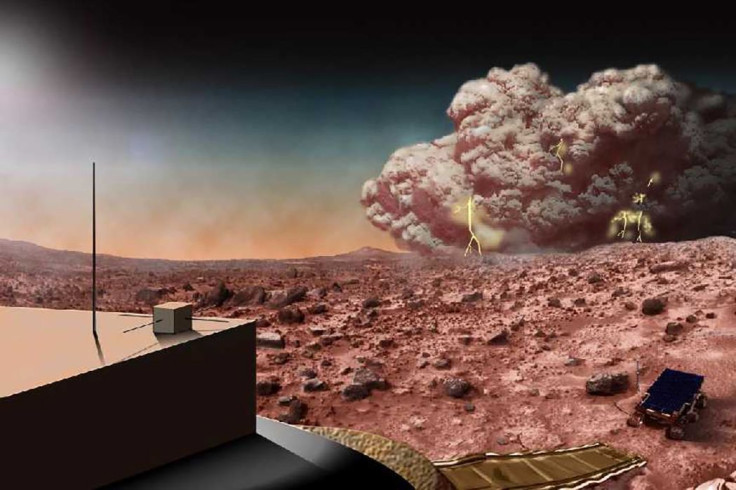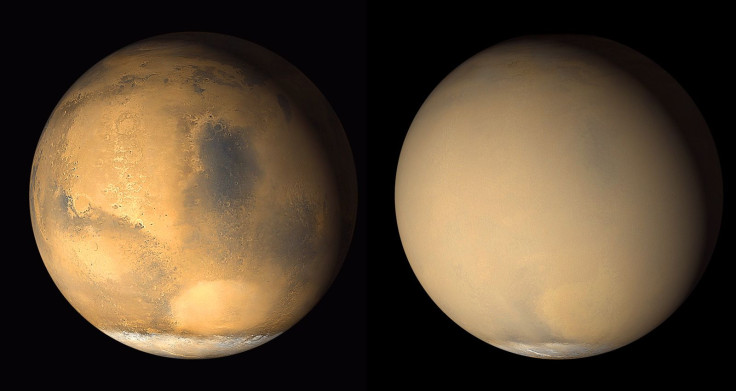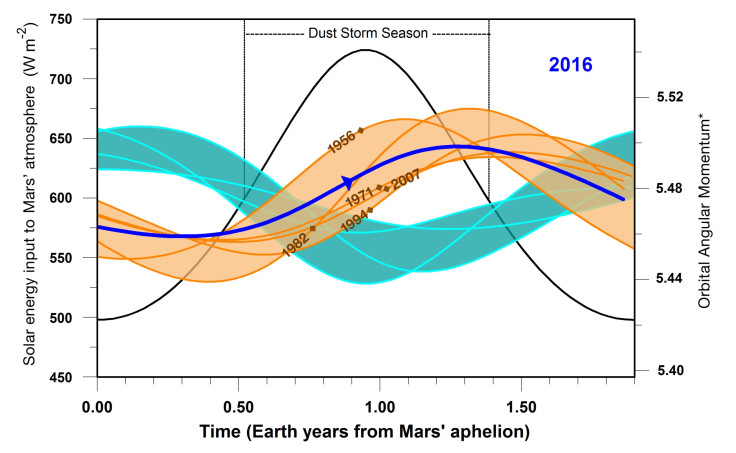NASA Predicts Mars’ Next Global Dust Storm May Arrive Within Weeks

It’s a problem Mark Watney — the protagonist of Andy Weir’s best-selling novel “The Martian” — would be all too familiar with. On a day like any other on Mars, you decide to amble around and soak up the scenery, and before you know it, you are caught in massive dust storm that separates you from your fellow astronauts, and leaves you stranded on the hostile surface of the red planet.
Although Mars is infamous for its intense dust storms, in real life, these events would not generate winds powerful enough to damage major mechanical equipments. What these occasionally globe-spanning behemoths can do, however, is produce a haze of fine dust that encircles the planet and obscures surface features beneath. This, in turn, could block sunlight for several weeks, drastically decreasing the amount of solar radiation powering rovers and landers on Mars’ surface.
The most recent Martian dust storm, which occurred in 2007, did exactly that.
“The global dust storm in 2007 was the first major threat to the rovers [Spirit and Opportunity] since landing,” John Callas, project manager for Spirit and Opportunity, said in a statement. “We had to take special measures to enable their survival for several weeks with little sunlight to keep them powered. Each rover powered up only a few minutes each day, enough to warm them up, then shut down to the next day without even communicating with Earth.”

So, with both NASA and SpaceX planning to send manned missions to Mars in the coming years and decades, finding a way to predict these dust storms would be a massive boon.
According to a team of researchers from NASA’s Jet Propulsion Laboratory in Pasadena, California, this might just be possible now. A prediction recently published in the journal Icarus suggests Mars may experience a global dust storm in the next few months, beginning sometime around Oct. 29 this year — if the storm follows the pattern laid out by the previous ones.
“Mars will reach the midpoint of its current dust storm season on October 29th of this year. Based on the historical pattern we found, we believe it is very likely that a global dust storm will begin within a few weeks or months of this date,” James Shirley, a planetary scientist at NASA’s JPL, said in the statement.

Astronomers have seen the red planet shrouded by planet-encircling dust storms nine times since 1924, and the five most recent planetary storms were detected in 1977, 1982, 1994, 2001 and 2007. However, the real number is likely higher, as there were years when the relative positions of Earth and Mars were not conducive to close-up observations.
Observations of the Martian atmosphere over the next few months will test whether the forecast — which takes into account the effect changes in the momentum of Mars along its orbit has on the planet's weather — is correct.
“Discerning a predictable pattern for which Martian years will have planet-encircling or global storms has been a challenge,” NASA said. “Researchers will be closely watching to see what happens with the next regional storm.”
© Copyright IBTimes 2024. All rights reserved.






















